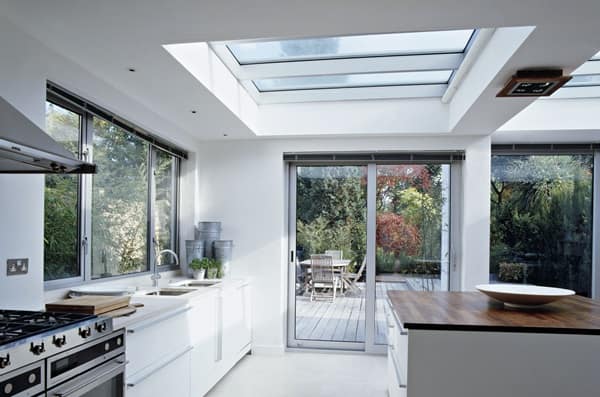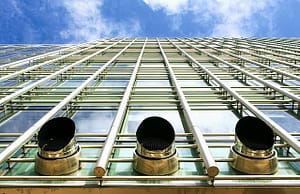When it comes to providing lighting for your commercial property, there is nothing better than the real thing. That is, the natural light provided by the sun. The problem, of course, is that buildings of all varieties are required to contain roofs to keep out the elements. No one wants to be working inside their cubicle while the rain is pouring down on them. However, it’s likely they would love to be working while basking in the warm, morning sunshine.
Says the professionals at Skylight Concepts, a commercial skylight installation company, there are many advantages to adding skylights to your commercial property. Besides natural lighting, you will also reduce energy consumption. Depending on the type of skylight installed, it’s possible to save 50 percent 80 percent on your company’s utility bill due to a decreased dependence on electric lighting.
That said, what are some other big benefits and key concerns when it comes to commercial skylight installation? According to a recent report by Roofing Magazine, skylights are engineered to optimise daylight, occupant comfort, energy efficiency, and visual interest in both renovated and new commercial buildings. Be it a fixed or operable, or long or short-span skylight, the translucent units can be found in nearly every commercial facility and have been for more than one-hundred years.
When it comes to a daylighting design plan, skylights are said to provide “long exposure top- lighting” which is engineered to illuminate interiors while, at the same time, reducing the demand for electricity. While energy savings are a real plus for companies, research also proves that the top-lighting increases occupant health and well-being. This means that productivity rises and so do retail sales. In schools, test results go up and, when it comes to medical facilities, patient recovery time is significantly improved.
To maximise these benefits, the commercial building’s orientation, roof slope, height, position of the installed skylight will determine the overall solar exposure during the organisation’s daytime operating hours. Engineers perform careful daylighting analysis to inform contractors of the skylight’s shape, size, and placement. Early team involvement between the commercial project’s architect, skylight manufacturer, general contractor, and roofing subcontractor, is said to be critical when it comes to ensuring specified, leak-free performance, and long-lasting effectiveness.
Common commercial applications
The commercial applications for skylight installations are numerous. They range from classrooms and libraries to airport terminals and hangars, to medical center lobbies and conference rooms, to corporate corridors and manufacturing facilities. Don’t forget shopping malls and restaurants.
Certified contractors are said to rely on multi-panel monumental skylights that specifically meet the requirements of commercial code-compliant projects. Typical commercial skylight configurations might include single slope, ridge/double slope A-frame, and even pyramids.
During the conceptual phase of building design, larger skylights are considered. But as the value-engineering phase of the commercial project kicks in, larger, more expensive skylights are often replaced with smaller, but still effective, units. Saving money on commercial projects is often a major concern.
Light transmission and glazing selection
Glazing selections for monumental skylights are said to typically feature laminated safety glass, cellular polycarbonate glazing or CPG, and fiber-reinforced plastic or FRP. Laminated safety glass is generally the best choice when it comes to transparency and the ability to offer clear views and unobstructed highly visible natural light transmission. If diffused daylighting is the preferred choice, so that glare and associated eye strain are minimised, CPG and FRB are the obvious skylight glazing selections.
CPG is engineered and manufactured not to “yellow.” It will also maintain its appearance throughout the window system’s lifecycle, or so experts attest. Boasting upwards of 70 percent light transmission, CPG surpasses FRP’s overall transmittance value. What this translates into is less costly construction material and fewer skylights required to achieve the identical daylighting objective. This will lower project costs and save on future maintenance and repairs.
While glass and CPG extends a skylight’s durability, they are also available in a variety of colors that enhance natural light transmission, thermal performance, and impact resistance. All these skylight attributes are interrelated in that if you alter the value of one, you alter the value of all.
Thermal performance and framing choices
Metal, especially extruded aluminum, is said to be the go-to material when it comes to framing a commercial skylight system. Aluminum, in particular, is easy and relatively inexpensive to fabricate in a controlled factory setting. Aside from the more familiar rectangular skylight configurations, aluminum can be shaped into barrel vaults, octagons, and other curved shapes.
To extend the durability of the aluminum framing members, high-performance finishes are added via architectural painted coatings in almost all colors, including metallic tones. The proper finish can go a long way in minimising the maintenance, care, and repair required over a skylight’s lifetime.
Baked enamel coatings, while providing less resilience, can offer a larger color selection. It’s also said to be a decent value for aluminum framing in less demanding environments. It’s important to remember that aluminum is recyclable, which makes it a more sustainable and eco-friendly construction product which can be of the utmost concern to certain building teams.
While aluminum is durable and versatile, it’s also very conductive. This means it’s recommended that framing members be “thermally broken.” That is, separated and insulated to avoid energy loss and heat transfer. Skylights that contain a high thermal performance can assist with maintaining optimum room temperature for a commercial building’s occupants. In the end, the skylight system will not only offer much needed radiance to a structure’s interior, it can create significant savings and much coveted energy savings.
Utilised for decades upon decades, skylights have become an integral part of a modern commercial structure. While some skylights can present moisture and leakage problems, if installed correctly and per project plans and specifications, issues and others like them can be easily avoided in the 2020s. The benefits of natural light and a sense of wide-open space far outweigh any negatives a skylight system might bring to a commercial building.






Leave a Comment